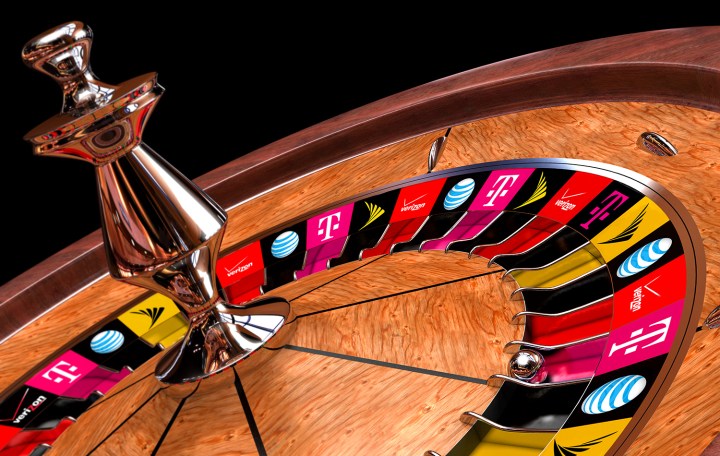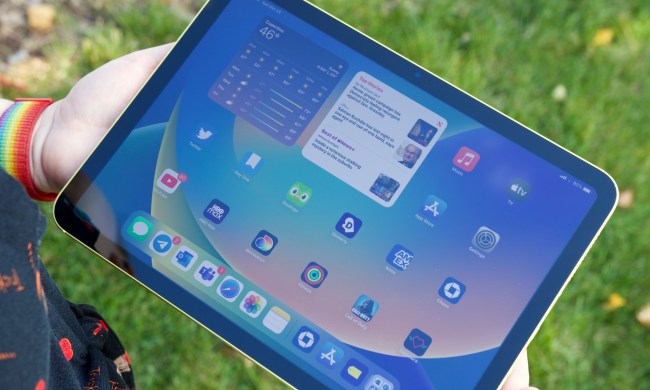
So, AT&T, Sprint, T-Mobile, Verizon; listen up. You’ve got a relatively good thing going now, but we know you can still do better.
U.S. carrier plans are more reasonably priced

The price for wireless service anywhere still varies greatly due to a number of reasons, but let’s start with something simple that should be pretty inexpensive: A smartphone plan with a few gigabytes of data, a lot of minutes, and unlimited messaging. This is a wireless plan that’s pretty typical with all the necessities covered whether you love your iPhone or your Galaxy S8.
If you’re in America, you can choose between any of the Big Four and pay anywhere from $35 to $60 a month depending on your carrier of choice, and any additional features like HD streaming. Verizon has the cheapest base plan at $35 a month for 2GB data, and unlimited talk and text, but if you go for its Unlimited plan, which has unlimited data, talk, text, and HD video streaming, prices start at $60 (not counting line pricing). When comparing the Big Four’s Unlimited plans, there’s about a $10 difference between all of them.
Price of basic smartphone plans in the United States |
|||
| Carrier | Price | Data | Minutes/Texts |
| Verizon (S Plan) | $35 | 2GB | Unlimited / Unlimited |
| Verizon (Prepaid) | $40 | 2GB | Unlimited / Unlimited |
| AT&T (Unlimited Choice Plan) | $60 | Unlimited | Unlimited / Unlimited |
| AT&T (Prepaid) | $30 | $5 per 250MB | Unlimited / Unlimited |
| Sprint (Unlimited Freedom Plan) | $60 | Unlimited | Unlimited / Unlimited |
| Sprint (Prepaid) | $40 | 3GB | Unlimited / Unlimited |
| T-Mobile (One Unlimited Plan) | $70 | Unlimited | Unlimited / Unlimited |
| T-Mobile (Prepaid) | $45 | 4GB | Unlimited / Unlimited |
In the UK, there are still a handful of carriers, and their prices cover a wide range. Vodafone, Orange, and Everything & Everywhere (EE) — a collaboration between Orange and T-Mobile — dominate the cellular scene there. All three carriers are cheaper for similar service to each of the four U.S. carriers, ranging from $25 a month for 2GB of data on (EE), to $27 a month (Orange), to $37 a month for 4GB of data (Vodafone).
Orange (in France) sells a wireless plan with unlimited minutes, unlimited texts, and 2GB of data for $27 a month. A major carrier in Spain, Telefónica offers a plan with 3GB of high speed data, unlimited calls, and texting for about $65 a month. That’s not bad, but considering AT&T can do unlimited data, talks, and text for $5 cheaper, Telefonica still has room for improvement.
Let’s not forget about Hong Kong and Japan. In Hong Kong, Hutchinson (also known as ‘Three’) will give you a 2.5GB high speed wireless plan with plenty of minutes for $52 a month. A similar, yet slightly better deal comes from Softbank in Japan, which will charge you $55 for unlimited 3G data and texting, and free calling to other Softbank users and landlines.
Price of basic smartphone plans around the world |
|||
| Carrier | Price | Data | Minutes / Texts |
| Everything & Everywhere (UK) | $25 | 2GB | Unlimited / Unlimited |
| Vodafone (UK) | $37 | 4GB | Unlimited / Unlimited |
| Telefonica (Spain) | $65 | 3GB | Unlimited / Unlimited |
| Orange (France) | $27 | 2GB | Unlimited/Unlimited |
| Softbank (Japan) | $55 | Unlimited | Unlimited / Unlimited |
| Hutchinson (Hong Kong) | $52 | 2.5GB | 2500 mins / Unlimited |
| *Prices converted on 4-20-2017 | |||
While we’re just talking about a simple smartphone plan here, the fact remains that just about any plan you can find in Europe, the UK, Hong Kong, or Japan, more than likely has a similar counterpart in the U.S. What international carriers have over American plans, however, are the amount of minutes and data you can get; people have more options if they don’t want to pay more for unlimited.
2-year contracts are (thankfully) a thing of the past
What could you do in two years? While most of us can’t see two weeks ahead, let alone two years, it eventually became a magic number for American carriers to pair with new plans. Until recently, it was plain silly and not in the consumer’s best interest.
Thankfully, 2-year contracts aren’t what they used to be, to the point that the four main carriers in the U.S. have stopped using them. AT&T did away with such contracts last year, and Sprint did the same. Verizon began moving away from them in 2015, and completely removed them in January. T-Mobile started the trend.
Across the Atlantic, many of the biggest mobile operators in Europe and the UK have made similar changes. Once upon a time, carriers would push 1-year contracts, 1.5 year contracts, or offer an incentive of some kind to go for the 2-year lock-in. Now, they offer and emphasize a variety of monthly phone, data, and pay as you go plans, which also leave customers open to upgrading their phones when they get the urge, just like the U.S.
Throttling is better than enforcing data caps
AT&T and Verizon were once very strict about their caps on data plans (meaning they’d cut you off), instead of throttling them (slowing down your speed if you overuse). Now, however, AT&T, Verizon, Sprint, and T-Mobile are a bit more lax when it comes to capping, and have made it clear that they’ll throttle your speeds after you’re hit a certain amount, such as using more than 22GB of data on AT&T and Verizon.
Throttling is a very common way to offer a set amount of high-speed data, and then limit users to a mere 128 Kbps (or slower) Internet connection should they exceed that limit. If a carrier doesn’t already offer ‘unlimited’ data in some way, they offer data as a “high speed” amount, rather than a hard cap on usage.
Most of the top carriers around the world slow down your mobile Internet speed if you go over, rather than slap you with a hefty overage charge. Vodafone, Telefónica, Orange, and Hutchinson, for example, will throttle you once you go over your data limit.
Still, even with the rule change regarding data caps, no one can effectively plan their data usage in advance. A few years ago, it was shameful for American carriers to punish its customers for being human, or for picking a ceiling they can never be allowed to touch.
U.S. subsidized phones used to be overpriced
Previously, carriers like T-Mobile would offer a smartphone for a seemingly low monthly price, but only after you bought the phone, as in paying the full price for it. This was the case with its “Value plans” from a few years ago, where you would get, say, the latest iPhone for $55 a month after paying hundreds of dollars beforehand. Apple’s iPhones, you may recall, can get a little pricey, especially if you want the model with the biggest storage.
U.S. carriers like Verizon and AT&T were just as bad, charging $200 for the Samsung Galaxy S3 or the iPhone 5, as long as you got a 2-year contract with it.
Like the 2-year contract, the idea of buying a phone for a subsidized price was eventually eliminated by wireless carriers in the U.S. Sure, this meant the full, expensive price of the smartphone was revealed to everyone, but it gave people the choice to pay the full price, go the pay per month route, or find a cheaper smartphone that has everything they want. AT&T’s Next program allows people to get a new smartphone for $0 down + tax, before paying $20 a month for 24 or 30 months, with the option to easily upgrade later.
Across the ocean, Everything & Everywhere will let you have an iPhone 7 with 5GB data and unlimited talk and texts for about $40 upfront and $60 a month, or the Samsung Galaxy S8 for about $13 upfront and $72 a month. As part of its 4GEE Max Plan, you can upgrade after 12-months without having to pay any additional fees. Needless to say, things are better for people looking to get new phones without paying hundreds of dollars.
Changes to come
Compared to how U.S. carriers stacked up against international carriers a few years ago, it’s clear that things have improved for American consumers who want the best smartphones without paying ridiculous prices for texting, minutes, or the phones themselves. Could things be better? Of course; things could always be better. As we said before, international carriers have the Big Four beat, but every carrier could do better in regards to how many different plans they have, and how much they charge, whether that price is upfront or monthly.
The death of 2-year contracts is a welcome change, though, and one that desperately needed to happen — as was the shift from strict data caps to simply throttling speeds.
We’ve seen carriers come this far, and we can only hope that more changes come soon. Consumers are smarter than ever, and they’ll be ready to call out their carriers should they try to go back to gouging people in none-too-subtle ways.
First image courtesy of imagefactory/Shutterstock
This article was originally published on 3-25-2013 by Joshua Sherman and last updated with fresh numbers on 4-29-2017 by Kyree Leary.


